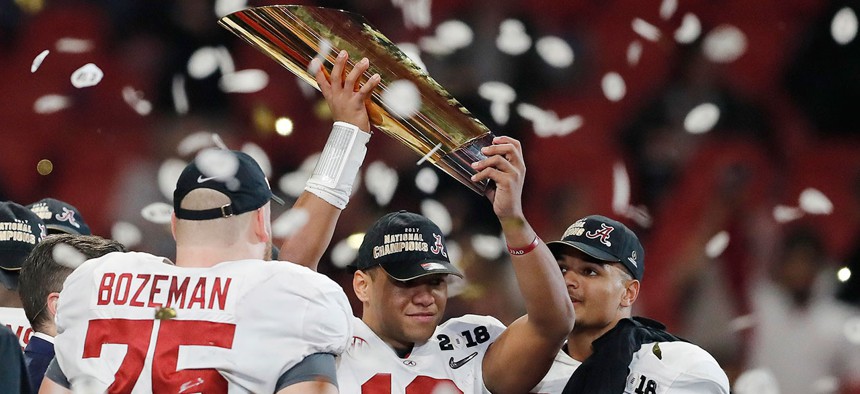What the College Football Championship Teaches Us About Leaders and Followers
A coach, two quarterbacks and a critical mid-game decision.
One of the most critical leadership characteristics is decisiveness: Dithering is destructive. But decisiveness alone does not automatically translate into implementation. A leader must do the hard work of creating followers who effectively, efficiently, and successfully respond to the leader’s decisions.
A perfect example of that truth occurred this week during the college football national championship game. Alabama coach Nick Saban replaced his long-time quarterback, Jalen Hurts (who held a 23-2 record), at halftime with a freshman, Tua Tagovailoa, who up until that point had played very little.
Tagovailoa led Alabama to an overtime victory on a 41-yard touchdown pass. The interesting question is, why did Alabama’s players follow Saban’s decision, support the rookie, and win the game?
Following a leader’s decision with full support is never automatic. In the real world, vision creation is often difficult, but Saban can tell his team every year, “our vision is to create a team capable of winning a national championship.” Vision creation, though, is only the first step. Unifying the 125-person roster around the vision is the challenge.
The Alabama team roster is filled with type-A personalities, five-star high school rated athletes who dream not just of being starters, but future first-round draft picks by a National Football League team. Some will be chosen to start at Alabama and many will not. For the latter group, their dreams will be crushed—as I suspect were those of Jalen Hurts. A football team is a competitive and potentially corrosive environment filled with individuals seeking personal success. What did Saban do to create a team full of enthusiastic followers?
Robert Goffee and Gareth Jones, in a 2000 Harvard Business Review article titled “Why Should Anyone Be Led By You?,” write that followers are created by leaders who are vulnerable with those they lead, who have intuition to gauge the appropriate timing of a decision, the ability to manage with tough empathy, and who capitalize on the differences in the team. These characteristics fit Saban.
Saban has a reputation for asking his team for advice in creating the starting lineup and developing game plans. He recognized that his long-time quarterback was not being successful, and that he needed to take a risk on a freshman with better passing skills. We don’t know what words Saban said to his new quarterback, but based on the ultimate team response, he must have been empathetic. And Saban understood he needed a different skill set to win.
Saban, in other words, exhibited each of the characteristics identified by Goffee and Jones. But the characteristics do not describe the process he used to create the followers.
To do that, Saban had to forge relationships between himself, his other coaches and each team member, and to facilitate the creation of trusting relationships between the individual players. He had to spend the time, energy and focused attention to know, understand and develop every team member. Followers are created by trusted leaders.
A football team is no different from any high-performing unit in the public or private sector. A leader who creates followers is one who has developed the capability to establish the relationships needed for those led to choose to give their all to accomplish the leader’s goals.



